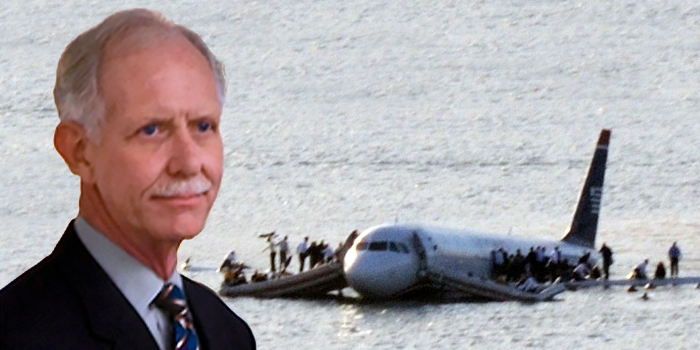
CCBY: Greg L and Ingrid Taylar
Because of the release last week and the subsequent attention to the movie “Sully” (starring Tom Hanks and directed by Clint Eastwood), I found myself curious about this pilot who landed the passenger flight US Airways 1549 in the Hudson River. . Who is this man? What did he know? How had he learned it? Was it instinct or training? Skill or luck? Are leaders, such as this, made or born?
So what does this have to do with you, your leadership strategy, and maybe your job search? Probably plenty.
Captain Sullenberger (also known as Captain Sully) had important elements of a successful career — deep passion, aptitude, high-quality, continuing education, and full commitment to his craft and his profession.
He showed a fascination with flying from a very early age. Sully demonstrated an innate understanding of the science behind flying and coupled that with an ability to perform in challenging conditions. He learned to glide as well as jet. (This is a great feat and also a very applicable metaphor.)
He was not first in his class at the Air Force Academy but was always recognized as a top flyer. The hero pilot chose to educate himself on the task at hand and also studied the mindset and potential challenges. In graduate school he researched how crews behaved in the cockpit and understood the role of the leader, which is why he immediately took over the throttle and informed the air traffic people their directions were impossible when it was clear the plane was in immediate danger. He also was the last to leave the plane having checked numerous times for passengers, even when the plane was filling with water and sure to sink. His advanced training had focused on safety and reliability. He was tested that day
The man became well known as a safety specialist, even planning for a second career in the field after retirement. He was actively involved in the advancement of safety, serving on government accident review teams, and as a visiting scholar. He gave back to his own through the Airline Pilots’ Association. Not to be minimized, he did the time — more than 19,000 hours in the air (see my article about 10,000 hours and becoming an expert).
Captain Sullenberger created a career out of a pastime, learned from the best, and expanded his resume into related fields. He had an expertise and understood what it meant to be a leader and became well known for these traits, long before that fateful day. He planned for when the market might no longer want or need him. Networking and giving back were part of his routine.
He is still preaching his beliefs on safety and has more than half a million fans on Facebook. Captain Sullenberger is now the subject of a feature film that ranked #1 in box office receipts its opening week. When asked about his achievement he answered with great clarity of purpose, “that’s what pilots do — we land planes and protect passengers.” When asked about his successful landing of the plane in the river (something that had never been done before) he is quoted as saying, “Had I lost one passenger, I would have considered myself a failure.” Talk about high standards, especially when it comes to those who depend on you.
Captain Sulenberger nurtured his talents, had a vision and a leadership strategy. They served him well. I think at least 151 other people would agree. What can each of us learn from him and his service, and are we able to see what we need to do?
Leave a Reply